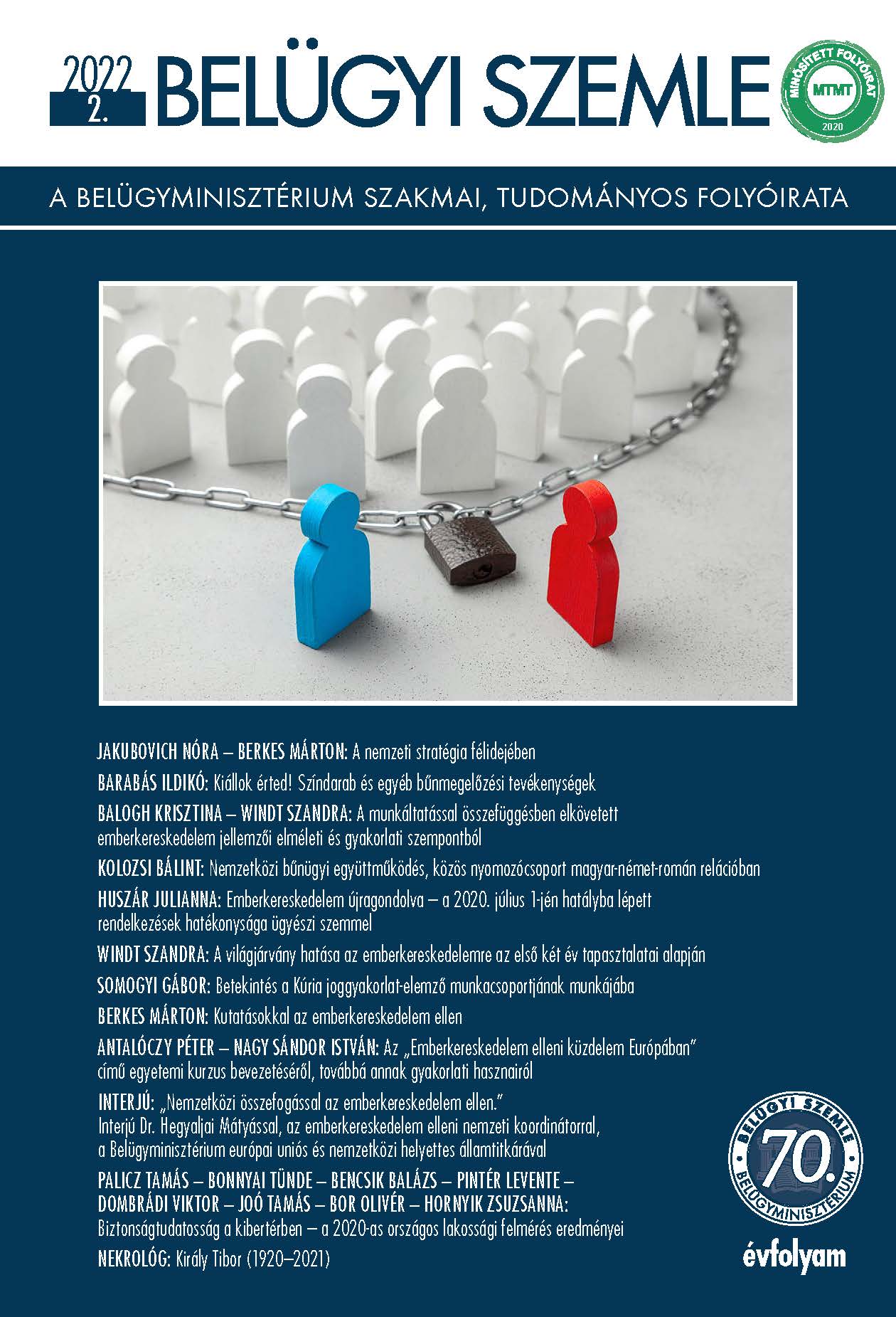Abstract
Aim: The amendment of the legal situation of trafficking in human beings and forced labor in 2020 required a rethink of the established practice, which was confirmed by the decisions of the Curia. And although, according to the explanatory to the law that introduced the amendment was aimed at making the regulation more coherent and transparent, the practice ‒ for the moment ‒ faces difficulties of interpretation. In this situation, the study tries to help the emerging practice with suggestions for solutions.
Methodology: The study attempts to support practical work by considering responses to the typical questions identified in some criminal proceedings for trafficking in human beings and forced labor.
Findings: Given the complexity of the topic and the unique characteristics of each criminal case, many of the problems identified cannot be addressed in the present study, so only the most recurring dilemmas have come under scrutiny.
Value: The complexity of the underlying phenomenon and the minority of the practice make it clear that professionals need to address the topic over and over again.
